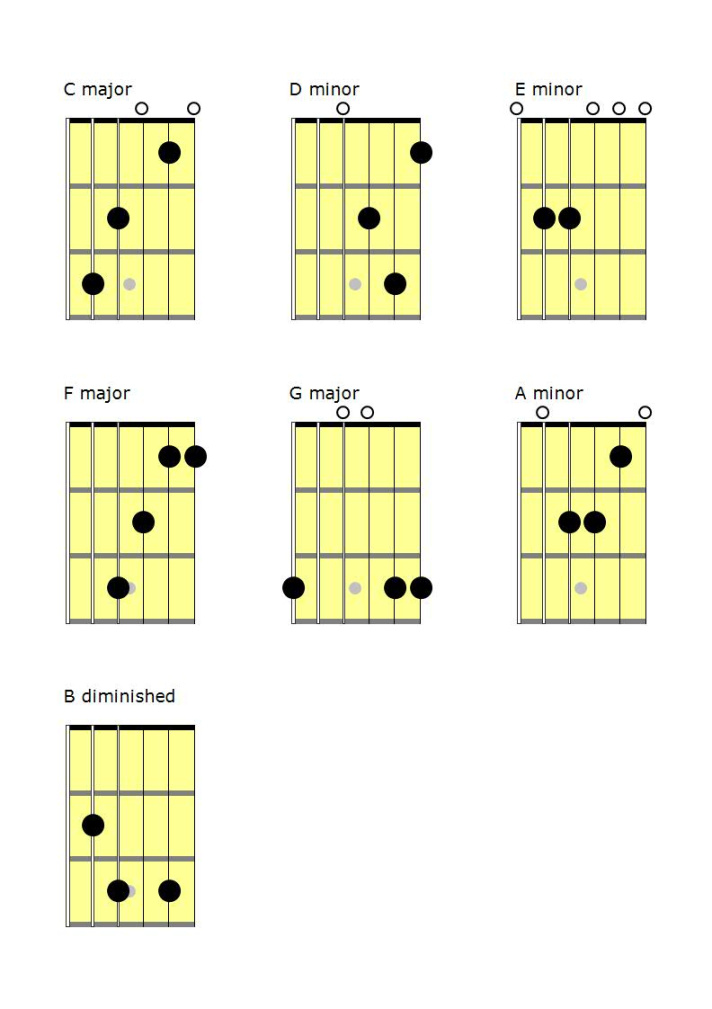Electric Guitar Chord Progressions: Powering Your Sound
So, you’ve got your electric guitar plugged in, maybe a few pedals at your feet, and you’re ready to rock. But where do you start? Sure, you can noodle around with single notes, but to really build something, you need chord progressions. Think of them as the backbone of your music, the sequence of chords that give your songs their structure and feeling. Electric guitar opens up a whole new world of possibilities for these progressions, thanks to its versatility and the effects you can use.
Understanding the Basics
Before we dive into the cool stuff, let’s get a few basics down. Chords are simply groups of notes played together. In standard tuning (EADGBe), you can create chords all over the neck. Major chords generally sound happy and bright, while minor chords tend to sound sad or melancholic. You’ll also hear about dominant chords, often used to create tension and resolution.

The key to a good progression is how these chords flow together. Think of it like a conversation: some chords lead to others, creating a sense of movement and direction. We often use Roman numerals to represent chords in a key. For example, in the key of C major, C is I, Dm is ii, Em is iii, F is IV, G is V, Am is vi, and Bdim is vii°.
Common Electric Guitar Chord Progressions
Now, let’s get into some progressions you can actually use. These are just starting points, but they’ll give you a solid foundation.
The Classic I-IV-V Progression
This is the bread and butter of rock, blues, and countless other genres. In the key of E, that’s E-A-B. It’s simple, but incredibly powerful. Try playing it with power chords for a heavy rock sound, or add some seventh chords for a bluesy vibe.
The I-V-vi-IV Progression
This one’s super popular in pop and rock. In C major, it’s C-G-Am-F. It has a nice, cyclical feel and works well for both upbeat and more emotional songs. Experiment with different strumming patterns and voicings to change the mood.
The Blues Shuffle
For a classic blues feel, try a 12-bar blues progression. It typically uses I-IV-V chords, but with a specific structure: I-I-I-I, IV-IV-I-I, V-IV-I-V. You can add seventh chords, like dominant 7ths, for that authentic blues sound.
Power Chords and Distortion
One of the coolest things about electric guitar is how it handles power chords and distortion. Power chords are simplified chords that only use the root, fifth, and sometimes octave. They sound huge and are perfect for rock and metal. Try playing the I-IV-V progression with power chords and crank up the distortion. You’ll instantly get a heavy, driving sound.
Adding Effects
Electric guitar effects can completely transform your chord progressions. A little reverb can add space and depth, while delay can create rhythmic patterns. Overdrive and distortion can add grit and aggression. Experiment with different effects to see how they change the character of your chords.
Voicings and Inversions
Don’t just play chords in their standard positions. Try different voicings and inversions. Voicings are different ways of arranging the notes in a chord, while inversions change the order of the notes. This can create interesting textures and make your progressions sound more unique.
Experiment and Find Your Sound
The best way to learn chord progressions is to experiment. Listen to your favorite songs and try to figure out the chords. Don’t be afraid to try different combinations and see what sounds good to you. There are no hard and fast rules, so let your creativity guide you.
Beyond the Basics
Once you’re comfortable with basic progressions, you can start to explore more advanced concepts. Try adding passing chords, which are chords that connect two other chords. You can also experiment with modal interchanges, which involve borrowing chords from other keys.
Tips for Electric Guitar Chord Progressions
Use a metronome: This will help you keep your timing consistent.
Conclusion
Electric guitar chord progressions are the foundation of countless songs across various genres. By understanding the basics and experimenting with different techniques, you can create your own unique sound. Remember to practice regularly, listen to your favorite music, and don’t be afraid to try new things. With a little time and effort, you’ll be writing killer chord progressions that will power your music and keep your audience engaged. The electric guitar is a very versatile instrument, use that to your advantage.

